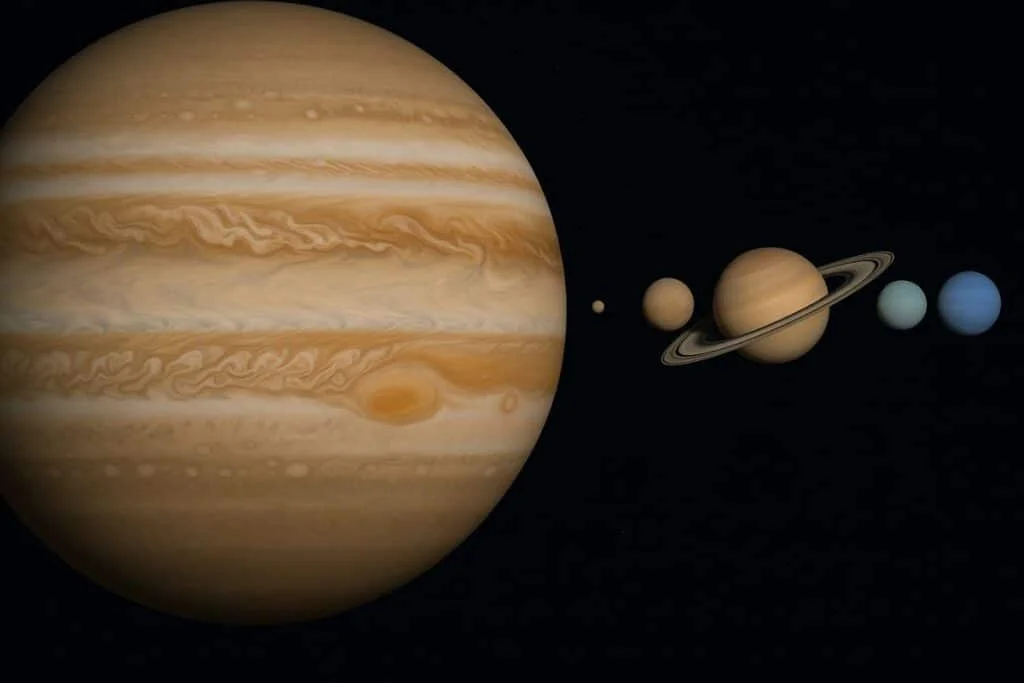
Jupiter’s Early Years: Gas Giant Was Once Twice as Large, Reveals New Study
Jupiter, the solar system's largest planet, wasn't always the size we know today. A groundbreaking study published in Nature Astronomy reveals that 4.5 billion years ago, the gas giant was a colossal twice its current size with a magnetic field 50 times stronger. This discovery is reshaping our understanding of the solar system's formation and Jupiter's pivotal role in it.
Researchers from the California Institute of Technology and the University of Michigan have peered into Jupiter's past, uncovering its primordial state. According to their calculations, young Jupiter had a volume equivalent to over 2,000 Earths, dwarfing its current size of approximately 1,320 Earths. This swollen state existed around 3.8 million years after the first solids formed in the solar system, a critical juncture when the protosolar nebula began to dissipate.

The innovative approach used by Konstantin Batygin and Fred C. Adams focused on the slightly inclined orbits of Jupiter's small moons, Amalthea and Thebe. These inner satellites act as "orbital fossils," preserving traces of the gravitational influence of the primordial Jupiter. By analyzing these subtle wobbles, scientists bypassed the traditional uncertainties associated with planetary formation models.
"It's astonishing that even after 4.5 billion years, enough clues remain to let us reconstruct Jupiter's physical state at the dawn of its existence," said Adams. This sentiment highlights the remarkable preservation of information within our solar system.
Jupiter's immense gravity has long been recognized as the solar system's "architect." Its gravitational pull shaped the orbits of other planets and sculpted the disc of gas and dust from which they emerged. This new research reinforces this view, providing a clearer picture of Jupiter's influence during the solar system's formative years.
Furthermore, young Jupiter's extraordinarily powerful magnetic field, around 21 milliteslas, played a crucial role in the circulation of charged particles within the nascent solar system. This influenced conditions around future terrestrial planets, potentially impacting even Earth's formation.
The study aligns with the core accretion theory, which posits that giant planets form when a rocky, icy core rapidly accumulates gas. These findings refine the timeline and parameters of this process, indicating that Jupiter remained inflated for several million years before cooling and contracting to its present size.
This research provides valuable insights into the "hot versus cold start" debate surrounding Jupiter's early temperature and growth rate. By pinpointing Jupiter's rapid growth to around 3.8 million years after the first solids formed, scientists are gaining a more comprehensive understanding of its formation timeline.
While uncertainties remain about Jupiter's earliest moments, this study offers a crucial benchmark for future research. As Batygin states, "What we've established here is a valuable benchmark. A point from which we can more confidently reconstruct the evolution of our solar system."
This discovery not only satisfies our curiosity about Jupiter's past appearance but also sheds light on its crucial role in the formation of our solar system. Understanding Jupiter's early state is essential because the planet played a key role in shaping our solar system.
What implications do these findings have for understanding the formation of other planetary systems beyond our own? Share your thoughts and theories in the comments below!